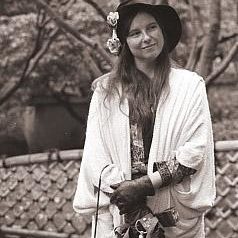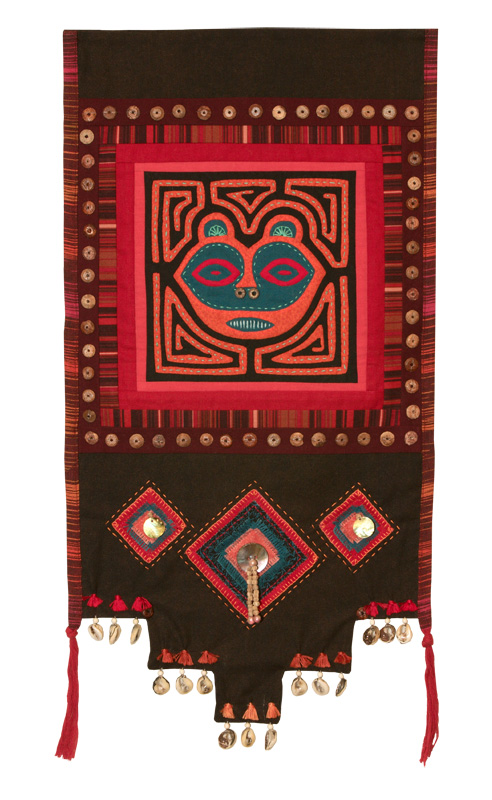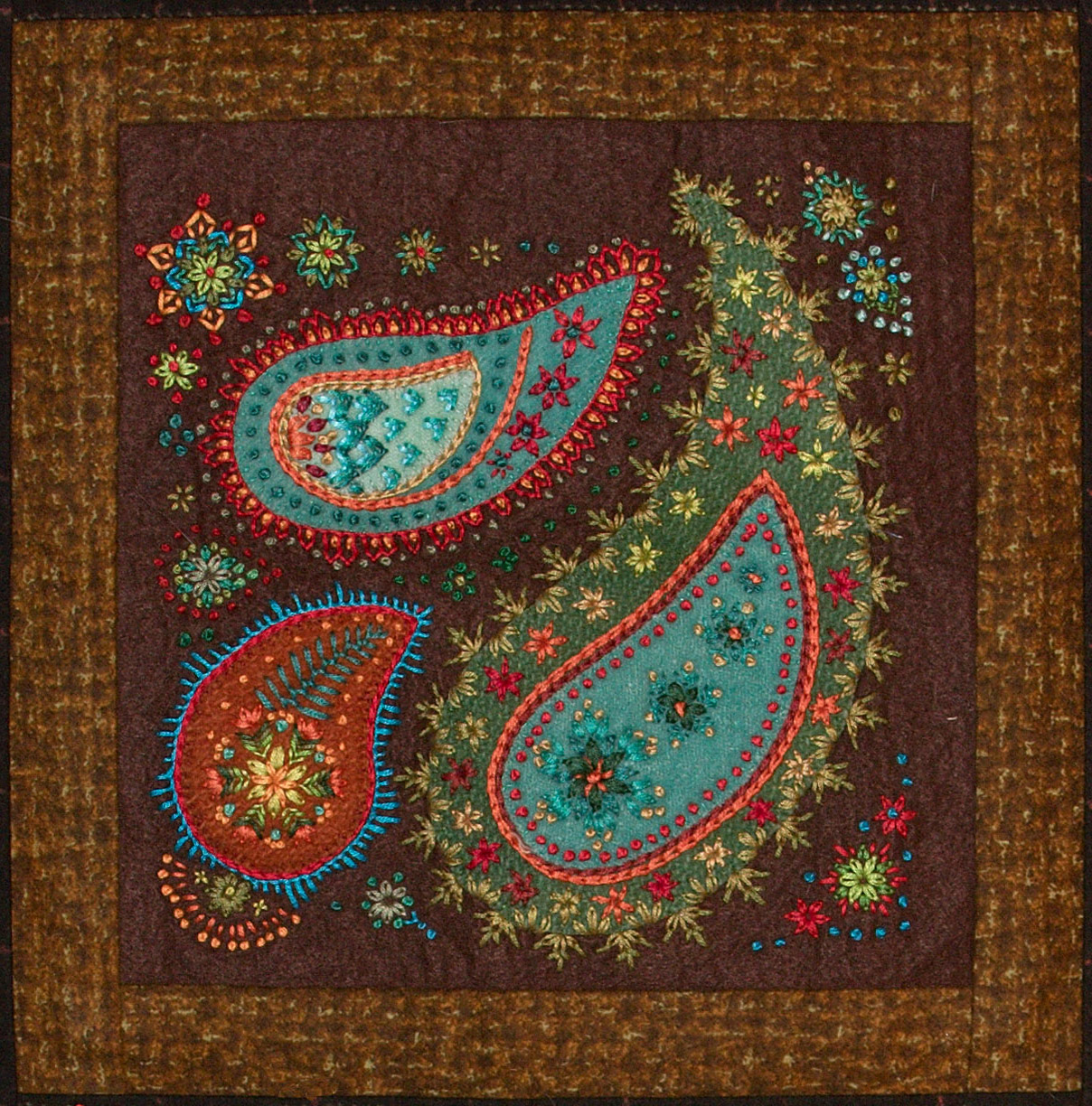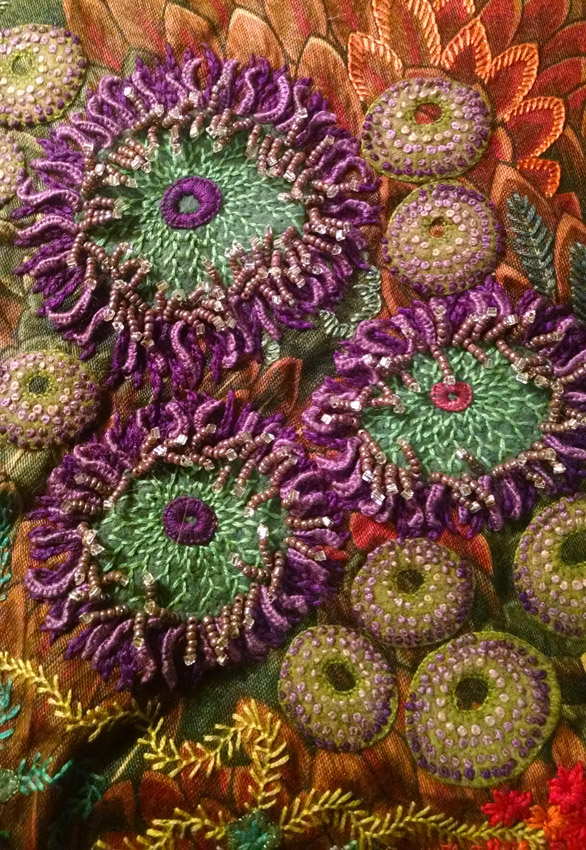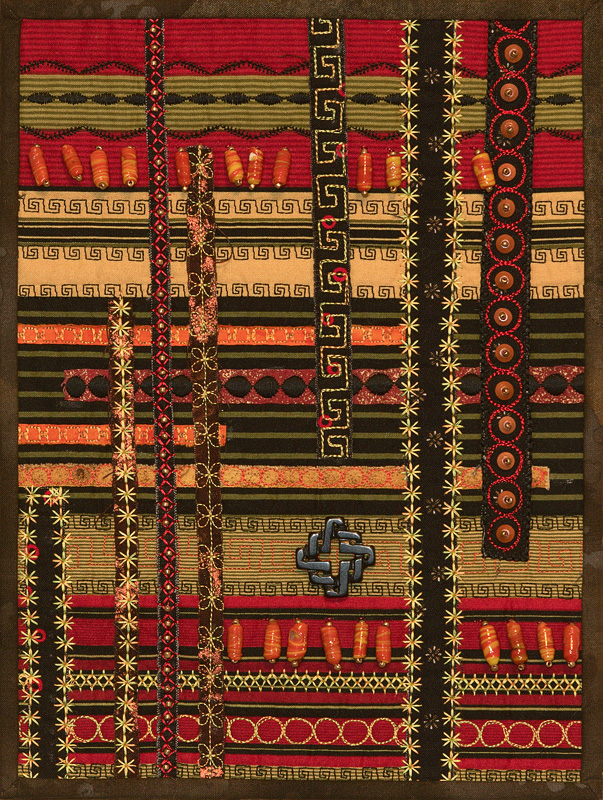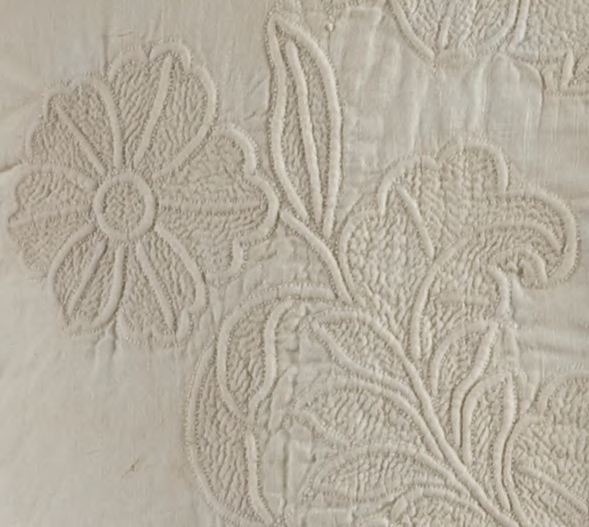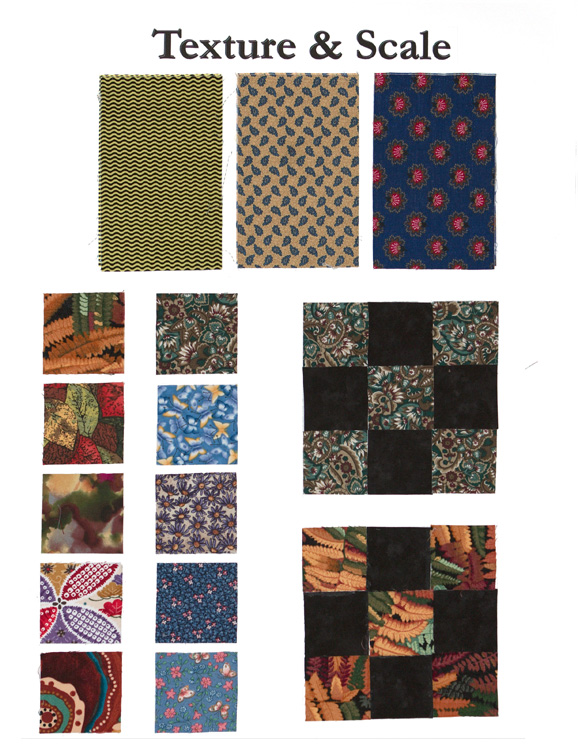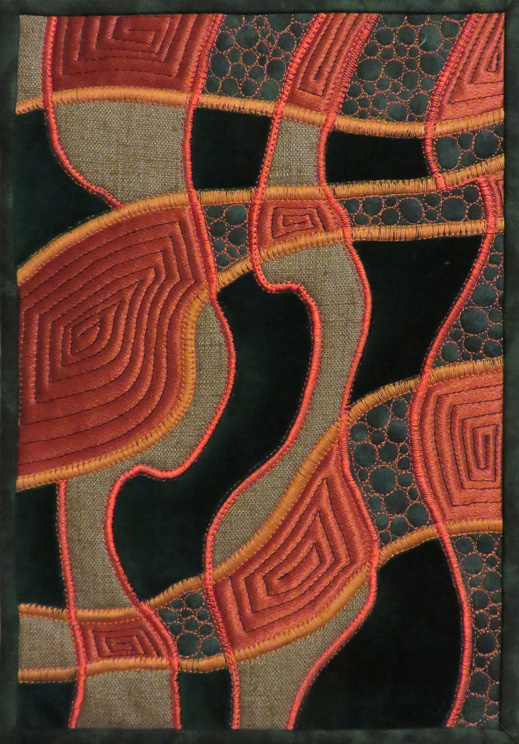Texture #4– Pile it on!
Now for the final chapter on texture; this is Texture with a capital ‘T’. In this chapter we will explore embellishment to add texture to your quilt/ fiber projects.
In bygone eras, embellishment was mainly the empire of the Crazy Quilt. Most of the time it was embroidery but beads and other artifacts were sometimes added. Years ago, my guild hosted a speaker on Crazy Quilts who spoke of a Victorian era crazy Quilt that was embellished with a stuffed squirrel – yuck!
Now, we live in the era of embellishment and there are entire magazines devoted to this art form – Embellishment (a publication from Australia) is completely devoted to embellishment and other publications such as Cloth Paper Scissors, Quilting Arts, Threads and Stampington & Co. frequently feature articles about embellishment; the art of ‘adornment’ has broken free from the world of Crazy quilts.
Though I had played a bit with embellishment early on – my second quilt incorporated an old mink coat pieced into the pattern – my first serious ‘conscious’ exploration into texture was a friendship quilt I made from blocks from my small quilt group. I had just finished a two and a half year project overseeing and making a somewhat traditional raffle quilt for my guild, and I was rebelling against flat and square. The theme was the beach retreat we took twice a year and after piecing the blocks together into an asymmetrical arrangement, I added a ‘fringe’ of seaweed made from Dupioni Silk along the top and bottom edges and a second ‘fringe’ along just the bottom made from drilled giant Sea Urchin spines, I also knotted some fishnet from Pearl Cotton and sewed seashells all over the quilt, The Sea Urchin spines add a particularly intriguing element as they clink musically if the quilt is moved.
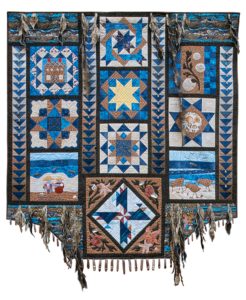
This gave me the idea to explore the idea of quilts that make sound and my next noisemaker art quilt was a Sashiko panel along the lines of Japanese Noren (ceremonial curtains that hang in a doorway) that has lengths of Bamboo segments in a fringe along the bottom edge. This panel, that I titled ‘Zen Wind Chimes’ also makes a lovely sound when the panel is stirred by a breeze if hung in an open window.
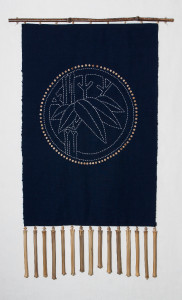
The genie is out of the bottle and there’s no putting him back; though I do still make more traditional ‘flat’ quilts, I am bolder about adding 3-dimensional embellishments to my art quilts. Buttons, beads, seashells… needle lace and fabric confetti – there is no better way to create lacy foliage to a landscape quilt than with confetti , and my Garden Window Nature Scrolls often sport berries made from beads, 3-D leaves and even some Maple samaras (the seed cases children often call ‘helicopters’) made from heavyweight painted and inked watercolor paper. I am also exploring the sea life found in a tide pool starting with my dimensional bead and embroidery Sea Anemones.
Thinking back, at first I thought I had not really done much tree dimensional work but when I started to contemplate what images I would like to include in the post, I realize I’ve used texture in my quilts far more often than I’d imagined
These quilts all employ some sort of dimensional texture
And now for some shameless self promotion: if you are interested in learning a few of these 3-D techniques, I will be offering a couple of classes upcoming over the next few months and into next year at various venues shown below.
Cedar Ridge Quilts – Button Fantasia:

a delightful way to showcase any solitary buttons you might have left over in your sewing box or, if you are a serious antique/decorative button collector, to display your treasures.
Ocean Waves Quilt Camp – Twin Rocks Landscape:

this is my strip-pieced/appliqué landscape technique with a new twist – creating three dimensional waves on a seascape using a variety of materials such as lace or confetti.
Cedar Ridge Quilts – Embroidered Folk Art Ornaments: these chubby stuffed little gems are made from hand embroidery on wool and are embellished with sequins and beads. Choose a cat, a peacock or a sweet little winged elephant.TIP: They need not be made into ornaments, they can also be used in wool applique projects.
Montavilla Sewing Center (Gresham) – Reversible Appliqué Tide Pool:
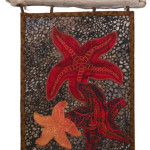

yes, you read that correctly – reversible, not reverse appliqué. This easy technique makes a two sided quilt that can be displayed from either side which in a way makes it 3-D in my opinion.
Art & Soul Retreats – I will be offering several classes at this event:
- March 12, 2019: 3-D Fabric Pebbles:

3-D fabric Pebbles These are remarkably easy to make and with the right fabrics can look astoundingly real.
- March 15, 2019: Stumpwork Sea Anemones:

Tide Pool quilt – Stumpwork ‘Sea Anemones’ Often called the flowers of the sea, these creatures come in many brilliant color combinations and the texture of these embroidered and beaded projects has to be felt to be believed; they are so wonderfully tactile you can’t resist running your hand over them.
- March 16, 2019: 3-D Fabric Leaves:
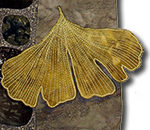
3-D Ginko Leaf Wonderfully ruffled and curled, these dimensional leaves can be used to embellish quilts, purses and bags, clothing and some artists even make jewelry from them.
I am also teaching the Stumpwork Anemones class in Florence later this August but that is a private class to a small quilt group and not open to the public,
And finally, my Art Journal Quilt classes held at three different locations – Pioneer Quilts (the first Friday of each month), Montavilla Sewing Center (the first Wednesday of each month at the Gresham location) and Sewn Loverly (the second Friday of each month). These classes vary from month to month and are not always on some sort of 3-D embellishment but those techniques are sometimes the focus of the classes.
